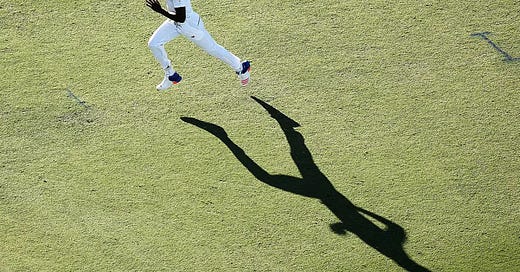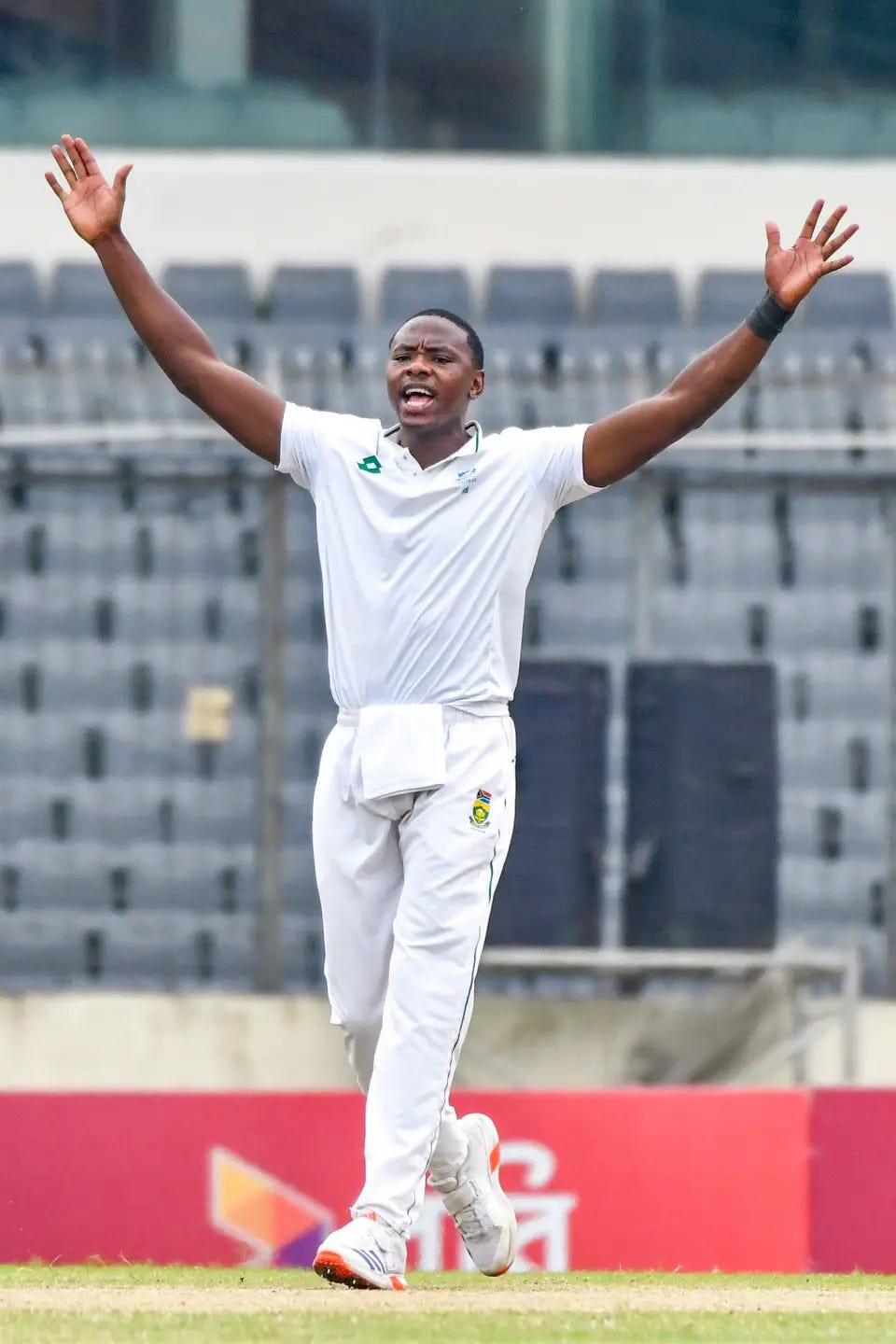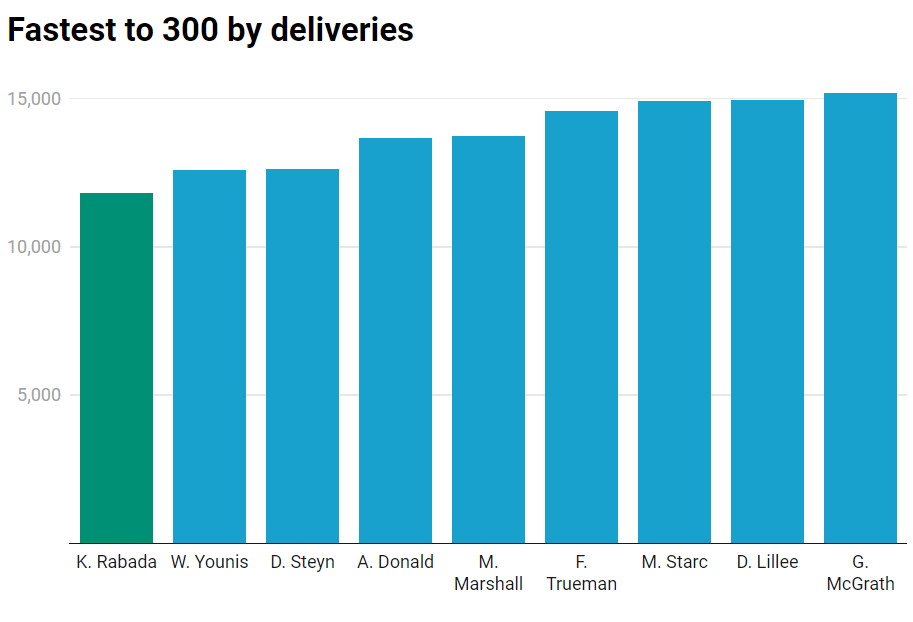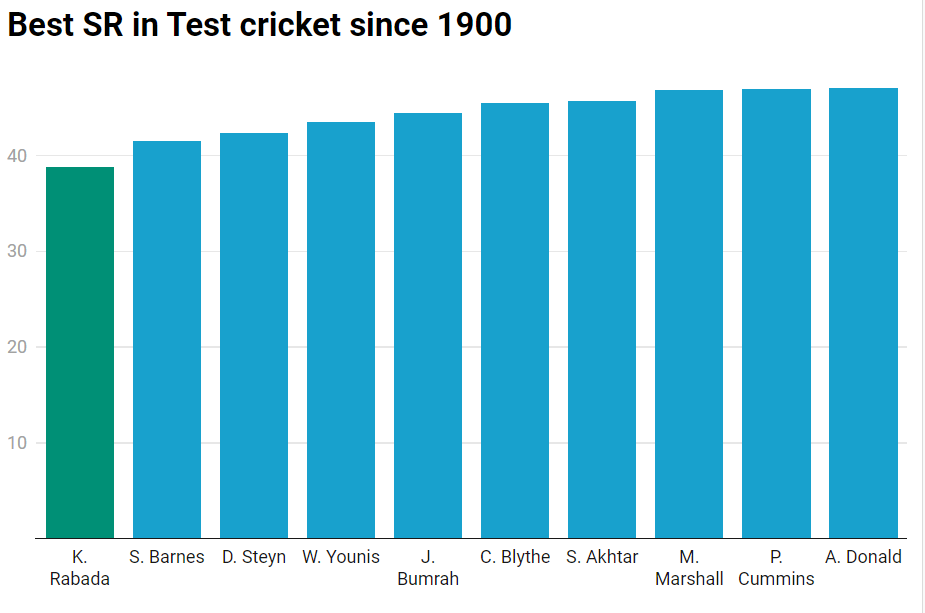September 2014.
The ball beat the bat’s outside edge as it cannoned onto the off-stump. AB de Villiers was out. Bowled. The South African icon raised his head to appraise the young bowler. De Villiers was raised in the slipstream of cricketing talent, constantly competing against, not only brothers six years or more older than him, but also their peers. That upbringing ingrained a competitive streak in him.
Add to it the fact that he was in the sweet spot of the peak of his powers. De Villiers would go on to tear down the West Indies bowling attack four moths later, in Johannesburg. He wasn’t about to let a work experience kid get the best of him.
The instant change in mood was palpable. What was supposed to be an easygoing net session escalated into something more intense. De Villiers began to toy with the youngster’s mind, dancing down the wicket and giving himself room as he smashed the 19-year-old left, right and over his head.
However, this was Kagiso Rabada. Granted, he was only 19 and fresh from a quadrangular series in Australia, where South Africa A had competed against India A, Australia A and the hosts’ National Performance Squad. He returned home from that series with a modest four wickets from five innings. He had spent a month in South Africa when he was seconded for an apprenticeship with the Proteas team touring Zimbabwe for a Tri-series that included Australia.
Yes, he was short on range and experience bowling to international batters. But, this was Kagiso Rabada, intensely competitive with a never-back-down attitude. He made up for what he lacked in skill by running in hard as if his life depended on it. He cranked up the pace and tried to beat De Villiers with speed.
“It's about finding a way and being relentless. It’s about having a never-say-die attitude. When you are getting smashed all over the park, you ask yourself, can it get worse? No, it can't. So you keep trying,” he once shared.
Bowled is one of Rabada’s all-time favourite dismissals. It takes a lot of things going right for a bowler to breach the defences of an international cricketer. It's one of the finest examples of the art of bowling.
Kagiso Rabada did not take cricket seriously until he was in Grade 10, when he dropped rugby to focus exclusively on the sport. In fact, when he watched cricket for the first time, it hadn’t enthralled him. He was seven and just happened to notice his grandmother watching the sport. It wasn’t love at first sight. Rabada didn’t give it a second thought as he rushed to play outside.
Rabada attended Bryanston Parallel Medium School, where he was known as the enthusiastic rugby player who tried to get into every ruck and tackle everyone. Cricket looked dour and bereft of the excitement rugby offered. He only tried out after a teacher had asked him to do so.
He tried it out and liked it enough for him to make it his summer sport, something to keep him busy while he waited for the rugby season to come round again. The sport slowly grew on him and when he made the decision to pursue cricket, Rabada threw everything at it. Part of that headfirst dive was him watching thousands of hours of bowling footage of bowlers from previous generations execute the craft.
“You see the greats castling the stumps and you also want to do it. When you finally get to do it, it gives you the feeling like you are on top and you can roll anyone over,” Rabada explained.
Ravi Jadeja was the first batter whose stumps he castled. It was in his third Test. Rabada landed the delivery on a fullish length. Jadeja cleared his right foot, as he looked to drive it through the covers. However, the ball has seamed back in, made contact with the inside edge and cannoned onto the stumps.
It was the beginning of a 62-Test run where Rabada did not go wicketless in a match. During that period, the Proteas star bagged 308 wickets in 65 Tests. He uprooted the stumps in around 15% of those wickets. In simple terms, 47 of his wickets have been bowled.
It was only fitting that he flattened Mushfiqur Rahim’s stumps as he became the 39th bowler to reach the 300-wicket milestone. He achieved the feat 50 years after Fred Trueman, the first bowler to register 300 Test scalps. It’s taken Rabada 65 Tests to get there, that’s as many matches as Trueman.
However, if you zoom in and look at the number of deliveries, Rabada is the fastest to reach the milestone. It took him 11 817 balls or nearly 1969 overs. The next best on that scale is Waqar Younis, with close to 800 more deliveries.
Trueman is considered by many as the prototype of modern fast bowlers. He had a smooth cartwheel action, which, coupled with a good physique, meant that he didn’t get injured often. Cricket historians and writers of his time speculate that he would have taken more than 400 wickets had he played more. However, Trueman was plagued by what he termed ‘the curse of the Truemans.’
Trueman’s career was hampered by numerous disciplinary sanctions, many of which he disputed until his death in 2006. One time, Yorkshire hauled him before a panel to answer for a misdemeanor, for which he escaped punishment by proving that he was 200km away from the scene of the crime.
Like Trueman, Rabada might never reach 400 wickets. However, his obstacles to the milestone are different from Trueman’s. South Africa’s FTP is designed in such a way that the bowler with the best strike rate in Test cricket has limited opportunities to get there.
When he bagged his 300th wicket, Rabada became the sixth South African bowler to do so. Only two of the other five, Shaun Pollock (421) and Dale Steyn (439), reached the 400-wicket mark. At his current rate, Rabada would need 20 more Tests to reach 400 and 28 more to take as many as Steyn.
If he remains uninjured and doesn’t miss a single Test, Rabada’s best shot of reaching the landmark is during South Africa’s 2027 series against Sri Lanka. He would have to wait until 2028 before he caught up to Steyn.
While we are on the subject of speculating about what might happen in the future, if 15.25% of Kagiso Rabada’s dismissals have been bowled, he will experience the bliss of flattening stumps in Test cricket 14 more times on his way to 400.
However, whatever happens, whether Rabada reaches 400 or not, or whether he catches up to Steyn's record or not, one thing is clear: Kagiso Rabada, this bowler who thrives by dismissing batters by uprooting their stumps, is a phenom








